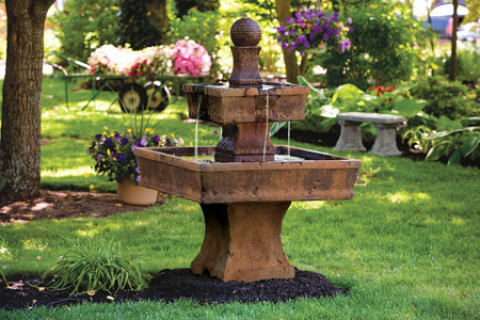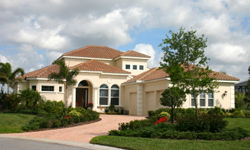|
"In the days of an uncertain stock market and job insecurity, there's no place like home sweet home. Even though the housing bubble burst over the course of 2007 and 2008, according to MSN Money, homeowners in many areas of the United States can still recoup 80 to 90 percent of the money spent on home improvements. The key is to know where to spend. Just because you put $20,000 into renovations, it won't necessarily add that much value. If your house needs a new roof, you won't see a return on it for a while because people expect the roof in a house they're buying to be in good shape. The same can be said for your plumbing and electrical systems. Bad plumbing will detract from the value, but new plumbing won't necessarily drive up the price tag. The key to adding value is to focus on the things that are important to buyers, and to not over-improve. You don't want to have the most expensive house on the block. So if the houses in your neighborhood have concrete driveways, investing in expensive brick pavers may not be in your best interest financially. Tips for how to get the best bang for your buck on your home renovations, even in a tight real estate market. If your house doesn't look appealing from the outside, chances are a potential buyer will never make it inside. According to Bankrate.com, a good first impression can add five to 10 percent to the value of your home. If the exterior color of your house is dated or fading, painting is a good place to start your improvements. Choose colors and exterior details that match the period of your house. Shutters add charm and depth, but not if they're hanging crooked or flaking paint. Paving a driveway or walkway that is in disrepair is a must, because this is what leads people to your home -- you want it to be welcoming. Attractive, manicured front-yard landscaping will also add value to your home. Drought-tolerant plants and easy-to-care-for perennials are a good option if you don't have a green thumb. And don't forget about your backyard either. Outdoor living is very popular as more people wish to commune with nature in the comfort of their own home. Sprucing up a deck or patio with attractive furniture, raised garden beds and maybe even a water feature will give you years of enjoyment and appeal to future buyers. Many homeowners don't give much thought to their landscaping, but a good design can add significantly to your home's value -- sometimes as much as a new kitchen or bath. Have a landscape architect out to your house to assess what you've got and offer suggestions. Perhaps creating a more formal look will better match your home's style (think geometrical shapes and straight lines), or, if your lot backs up to lots of trees, a woodland look full of natural paths, native plants and lots of groundcover. There's often no fee for an architect's design if you buy at least a few items, which is well worth it. Keep in mind, too, that landscaping is more than greenery -- it includes lighting, fences, rock features, paths, ponds, fountains and more. So even if your current trees and plants are attractively laid out, they may still be greatly enhanced by, say, a curving pathway, bench and a few well-placed lights. Landscaping is especially important (and more valuable to your bottom line) in temperate climates, where your plantings are visible year-round and you're able to be outside enjoying features like ponds all 12 months of the year". Reference:
Sennebogen, Emilie, and Melanie Radzicki McManus. "Top 10 Ways to Add Value to Your Home." HowStuffWorks. Howstuffworks.com, n.d. Web. 03 Apr. 2014. <http://home.howstuffworks.com/home-improvement/remodeling/5-ways-to-add-value-to-home.htm#page=0>.
0 Comments
"When redecorating your home, it’s important to remember the outside as well as the inside. Upgrading your outdoor space can make your home a more enjoyable space for both you and potential buyers—especially during summer months. “It’s useless to have a beautiful home inside and a mess outside,” says Jessica Yonker, editor of HGTVGardens.com and a contributor to HGTV.com’s blog Design Happens. “Pools, fire pits, and patios are always popular upgrades and additions, especially in summer,” Yonker says. “Not only do these upgrades make your home pretty, but beautifying your outdoors can also increase the value of your home.” Of course, cost is a huge factor, so budget carefully and have a solid plan in place. It’s safer to overestimate your budget than to plan an exact amount with no wiggle room, Yonker cautions. “When budgeting, make sure to factor in any taxes, service, and labor fees your project may incur, in addition to the materials,” she says. “Before you start a large outdoor project, you’ll want to think about how long you’ll be living in the home. You wouldn’t want to spend $20,000 on an outdoor kitchen if you’re not going to have a few years to enjoy it.” Popular outdoor upgrades include: Fire pits. Transform your back yard with a fire pit and make your yard the perfect place to relax on a lazy summer evening or chilly fall night. You can buy a portable fire pit in home improvement stores or install a custom-built, permanent pit. Outdoor kitchen. “For those who love to entertain, an outdoor kitchen is a must,” Yonker says. An outdoor kitchen can simply have a grilling area, or you can go all out with a gourmet grill, pizza oven, sink, stocked bar, and outdoor flat-screen television. Patios. To upgrade a poured concrete patio, consider replacing it with concrete pavers, which come in a variety of sizes, shapes, and colors. Also, consider adding a focal point like a paved walkway or fountain. Landscaping. “Adding a garden or planting trees are quick, inexpensive upgrades that can add beauty to your home,” Yonker says. Consider adding curb appeal and eye appeal with a splash of color and decorative planters on the front porch, patio, and decks. Paint. “You can also give your outdoors a new look by painting your house a new color or touching up the existing paint,” Yonker advises. A fresh coat of paint can inexpensively transform the look of your home and protect it from sun, rain, and wind, preserving your investment for years to come. Keep in mind that if you belong to a homeowners association, you’ll need check with it before you start any outdoor projects. The association may have restrictions on allowable paint colors, fence heights, and even types of trees you are allowed to plant. If you’re doing any digging, know where your utility lines are before you pick up the shovel. Call 811, a free, nationwide service that will connect you to a local center to arrange for someone to come out and mark your utility lines". Reference:
Becker, Eve. "Finance Blog." Equifax Finance Blog Increase Your Homes Value With These Five Outdoor Upgrades Comments. Http://blog.equifax.com, 8 July 2013. Web. 31 Mar. 2014. <http://blog.equifax.com/real-estate/increase-your-homes-value-with-these-five-outdoor-upgrades/>. |
AuthorArchives
January 2016
Categories
All
|







 RSS Feed
RSS Feed

